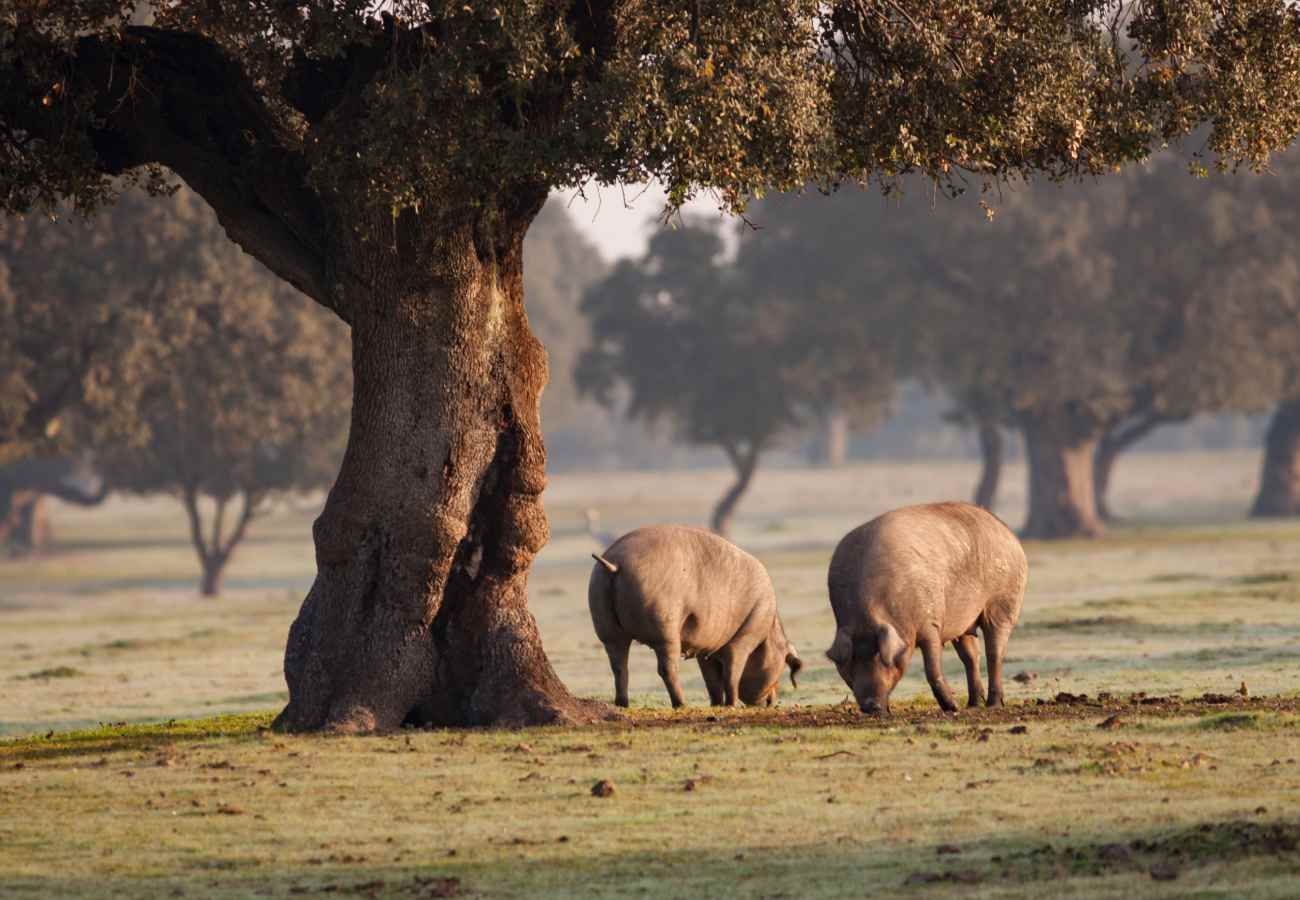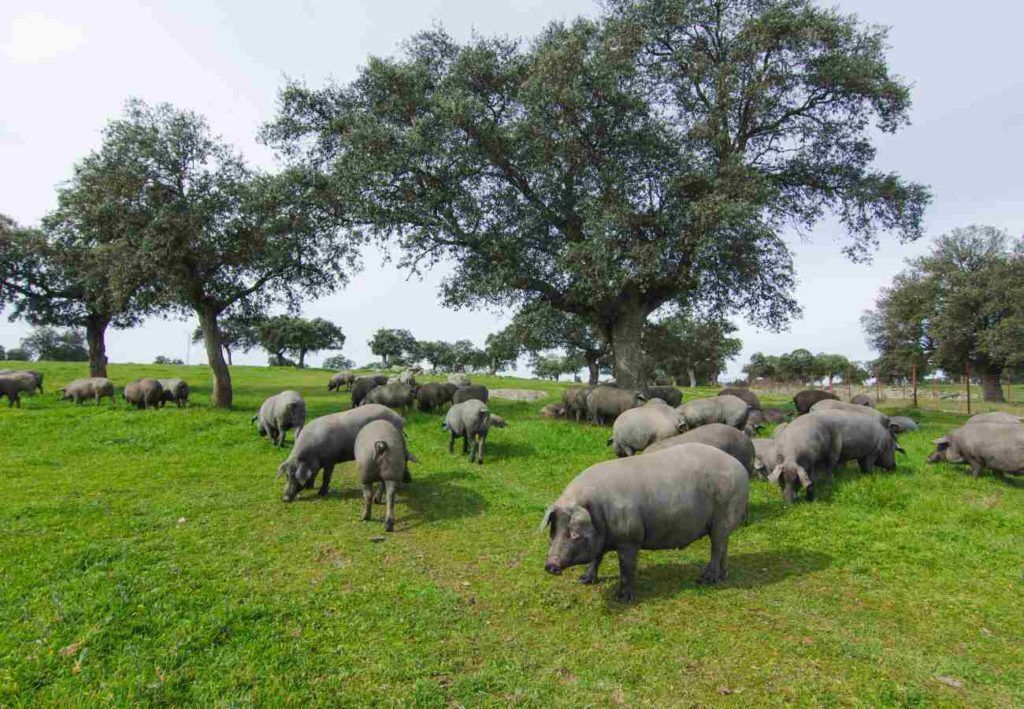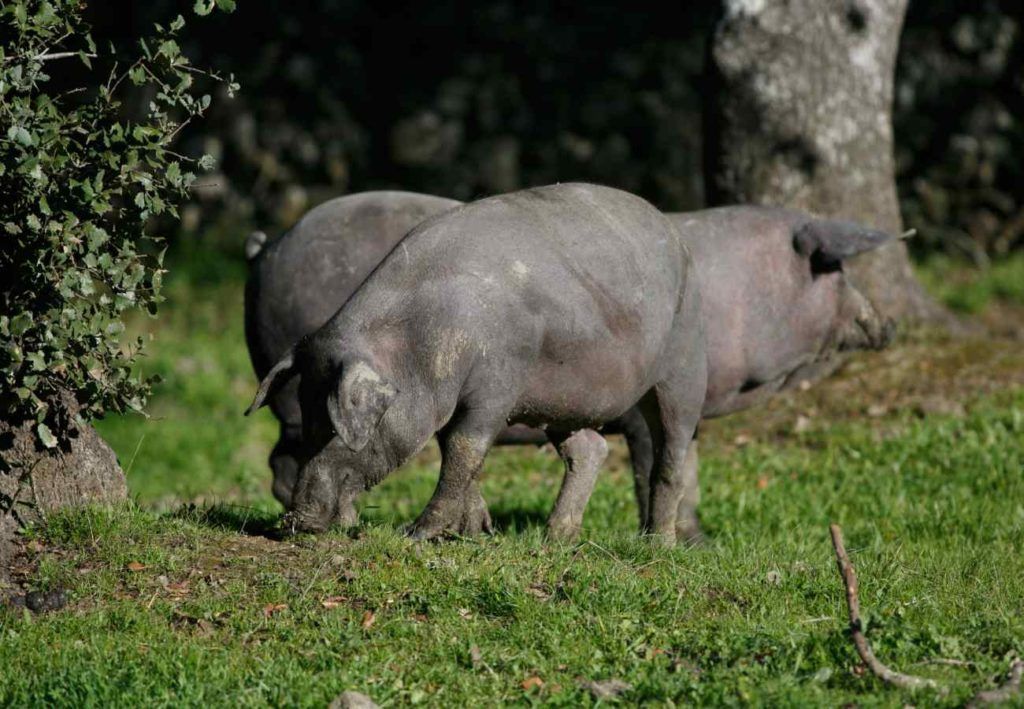
The mountaineer. Complete guide to know what it is
Making a good ham is an art, and at Enrique Tomás, we are not only committed to the craftsmanship of pork products, but we also want to openly share everything we know about the production of hams and shoulders. That's why today we want to tell you about the "montanera."
Well, this unique name refers to the time of year when the Iberian pig takes advantage of the fallen acorns from the oak trees to gain weight and consistency. If you want to impress your family and friends with your knowledge about pigs, pay close attention and take note of everything we're going to tell you about "montanera" hams. Let's get started!
What is the "Montanera"?
The term "montanera" refers to the final phase of Iberian pig breeding, during which the pigs are fed and exercised in the pasture. It is also known as the process of fattening the animal, as it freely grazes in vast forests of cork oaks, holm oaks, and evergreen oaks. Why are holm oaks so important? Because their fruit is the acorn, and as many of you know, it is a fundamental part of the diet of Iberian pigs, which are later used to make traditional acorn-fed Iberian ham or "montanera" ham.
Each "montanera" is unique, and during this period, there should be no more than 1.25 pigs per hectare to ensure they can feed and graze properly. It's important to note that the "dehesas" (pastures) and wooded pasturelands are part of the Spanish landscape, covering a total area of 3.5 to 5 million hectares, spread across 130 municipalities in Andalusia, Castile and León, Castile-La Mancha, the Community of Madrid, and Extremadura.
Phases of the "Montanera"
Although during the "montanera" period, Iberian pigs live freely in the pasture, there are certain phases that must be rigorously followed for them to reach the expected weight. That's why when the animals arrive, they are taken to the highest parts of the pasture, as that's where they engage in the most exercise to eat and drink freely. Once this phase is completed and as they gain weight, they are moved to the lower parts of the pasture.
And why is that? Because in this area, the oak trees and ponds are closer, and the pig exerts less effort to feed. In the pasture, grass and acorns are usually quite far apart, which is why pigs cover so much distance. It's estimated that an Iberian pig can travel between 12 and 15 kilometers per day and gain around 7 to 8 kilograms daily, translating to an average of one kilogram of edible meat per animal.
When does the "Montanera" season begin?
The entry of Iberian pigs into the "montanera" starts from October 1st and ends between the months of February and March. Why does this need to happen during these months? Because this is the optimal acorn ripening period. However, each season is different, and depending on rainfall and temperatures, oak trees may produce fewer or more acorns. During the "montanera," a pig enjoys a pleasant period of eating as it pleases, exercising, and resting. This is how they manage to gain around 46 kilograms in a minimum period of two months, although in some cases, the "montanera" can last up to 120 days, and pigs can gain between 70 and 80 kg.What happens if they don't reach this weight?
Pigs that don't reach the expected weight during the "montanera" continue to be raised in the field, in open areas of the farm or on the same pasture, but always outside the "montanera" season. Their diet switches to wild grass, feed (composed of grains and legumes), and the occasional acorn, even if the acorn season has ended.
In this regard, the location of the animal depends on the space available to the farmer, although the ideal situation is for them to continue being raised in partial or total freedom. It's worth noting that even if the Iberian pig doesn't reach the desired weight during the "montanera," it doesn't mean that the final product will be of lower quality; quite the opposite.
"Ibérico de cebo de campo" ham, formerly known as "ibérico de recebo" ham, comes from pigs that have also freely fed on acorns but have finished their fattening process with feed or fodder.
In Enrique Tomás, "ibérico de cebo de campo" products are identified with the typical green label and also our distinctive seal, the stars, as the quality of the ham increases, the number of stars increases. That's how we differentiate them from acorn-fed Iberian ham or 100% acorn-fed "pata negra" Iberian ham.
- Enrique Tomás Hams and Shoulders
Do Iberian pigs only eat acorns during the "montanera"?
Contrary to popular belief, Iberian pigs don't exclusively feed on acorns, cork oaks, and other shrubs from the beech family. They also need to consume grass, as it's an essential source of antioxidants and helps refresh their mouths so they can continue eating more acorns. For this reason, the farmer must strike a balance between the amount of aromatic herbs, natural grass, and acorns, as this will determine whether the animal is satiated and receives the necessary nutrients. Additionally, the grass helps the ham or shoulder preserve better and prevents the fat from becoming rancid.
Although each Iberian pig is unique, it's generally estimated that each one consumes between 3 and 4 kg of grass per day and between 10 and 12 kg of acorns. The peculiarity of this breed is that it infuses fat into its lean meat as it fattens, maintaining its ability to move, its slender legs, and its elegant shape. This is what contributes to the exceptional quality of acorn-fed Iberian ham!
Why are acorns so important?
Feeding Iberian pigs with acorns is crucial not only for the flavor and texture it imparts to the ham but also for the nutritional properties it imparts to the final product. The high oleic acid content of acorns prevents Iberian pigs' cholesterol levels from becoming high. In fact, consuming acorns has a positive impact on our health, as it helps reduce blood pressure and decreases bad cholesterol while increasing good cholesterol.The next time you come to Enrique Tomás to buy ham or shoulder, you'll do so with the knowledge of all the benefits its consumption provides. This is especially true if you're purchasing one of our Iberian products!
- Iberian Free-Range Hams
Quality Pieces at the Best Price
If there's one thing that characterizes the ham and shoulder we offer at Enrique Tomás, it's that they are high-quality pieces available at the best price. We collaborate with artisans and producers who share our passion for perfect ham. Furthermore, we have a team of professionals who ensure that the product goes from the drying room to your home in the best possible condition. And we'll never tire of saying it: "Ham is not just food. It's a feeling." So, what are you waiting for? Don't hesitate to buy any of our products from our online store. You won't regret it!





